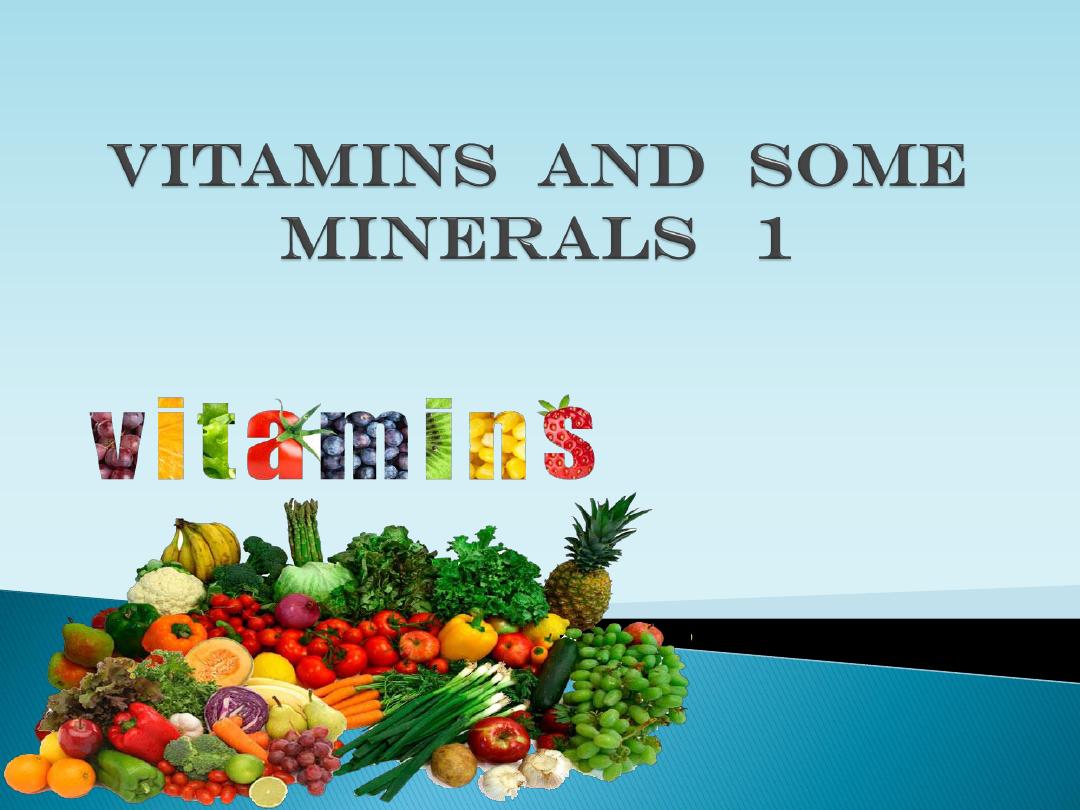
Dr. Akeel Al-yacopy
M.B.Ch.B
Baghdad
M.R.C.P London
M.R.C.P UK
F.R.C.P Glasgow

Deficiencies of vitamins still occur in affluent
countries, folates, thiamin, and vitamin D and C.
Some of these deficiencies are induced by diseases
or drugs.
In developing countries, deficiencies disease are
more prevalent. Vitamin A deficiency
(Xerophthalmia) for example is a major cause of
blindness.
Some vitamins have useful actions above the dose
that prevent classic deficiency disease, for example
vitamin A, C, B6, Nicotinic acid, have been used to
treat hyperlipidaemia.

Vitamins are:
Organic substances or groups of related
substances.
Found in some foods.
Substances with specific biochemical functions in
the human body.
Not made in the body (or not in sufficient
quantity).
Required in very small amounts.

Best understood of the action of vitamin A is its role
in night vision: 11-cis-retinaldehyde.
Is combined with specific protein in the light
sensitive pigment, rhodopsin, in the rods of the
retina.
Night blindness occurs in children deficient in
vitamin A in some developing countries. And in
affluent countries is seen rarely in patients with
chronic biliary obstruction or malabsorption.
More recently discovered function of vitamin A is
that it affects many different cell types.
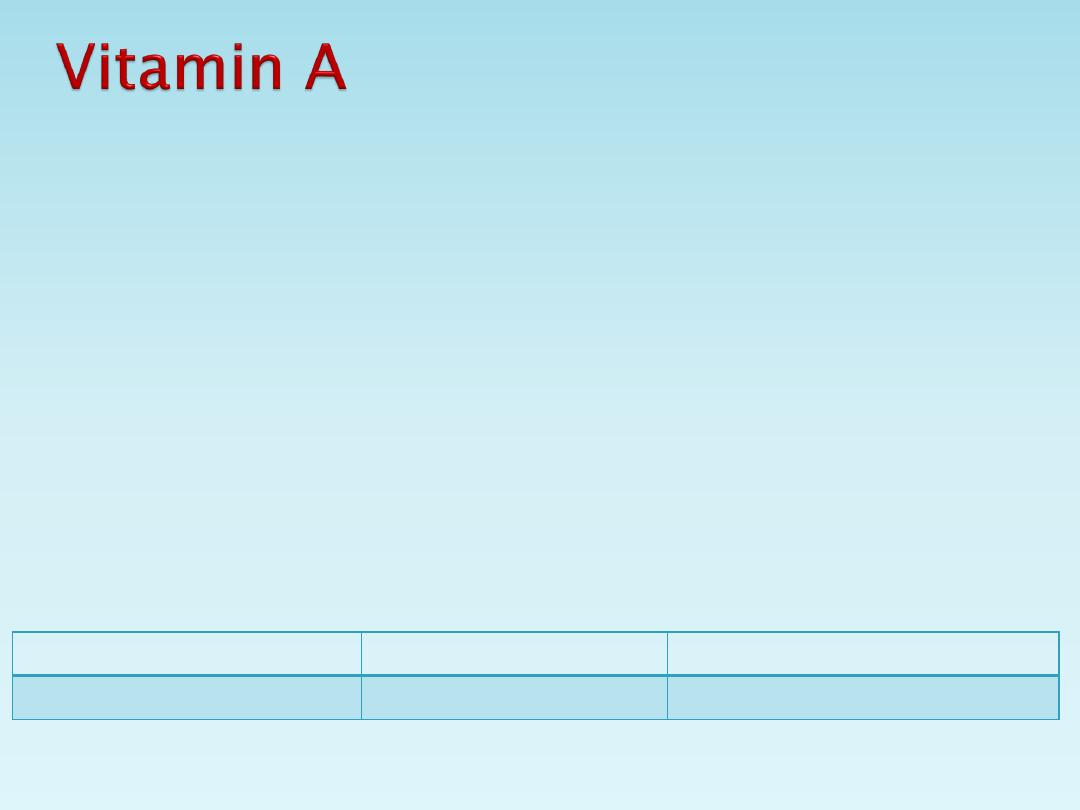
In vitamin A deficiency there is metaplasia of
conjuctival epithelium and loss of mucus production
leading to Xerophthalmia.
Other epithelia (respiratory for example) are
similarly affected and their resistance to infections
is lowered.
Alternative name
Pharmaceutical preparation
Vitamin A
Retinol
Retinyl Palmitate
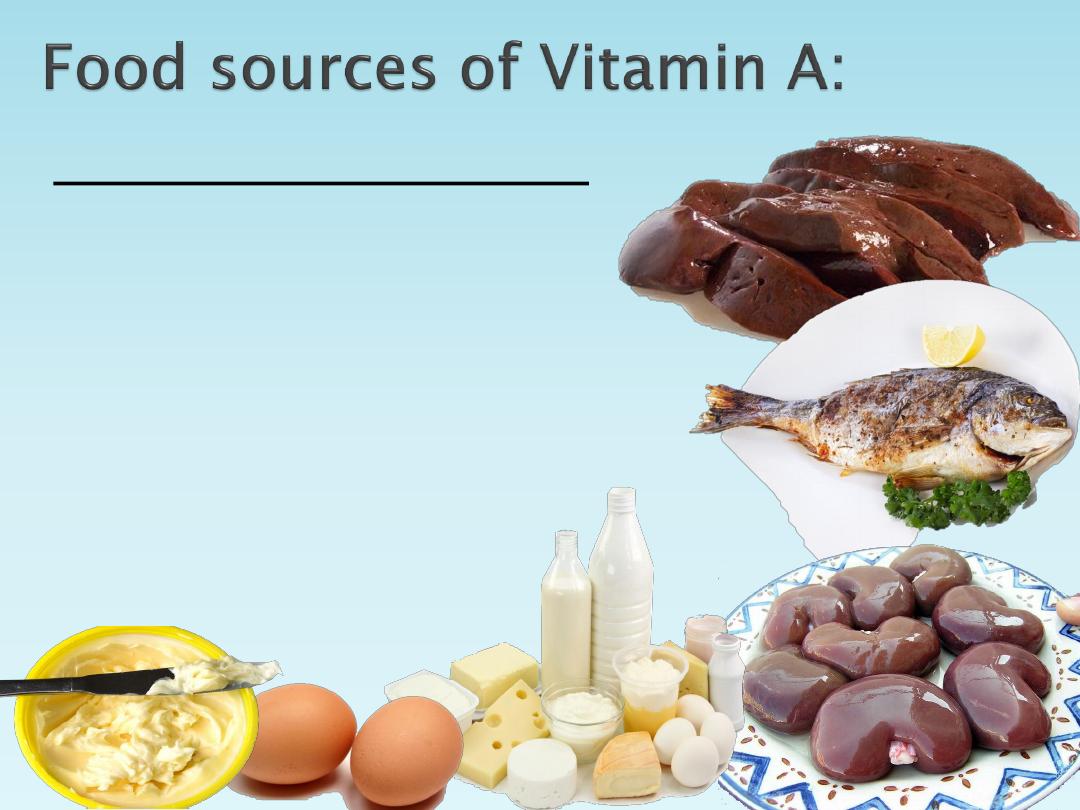
Preformed Vitamin A (retinol):
Liver.
Fish.
Liver oils (very rich sources).
Kidney.
Dairy products.
Eggs.
Fortified margarines.
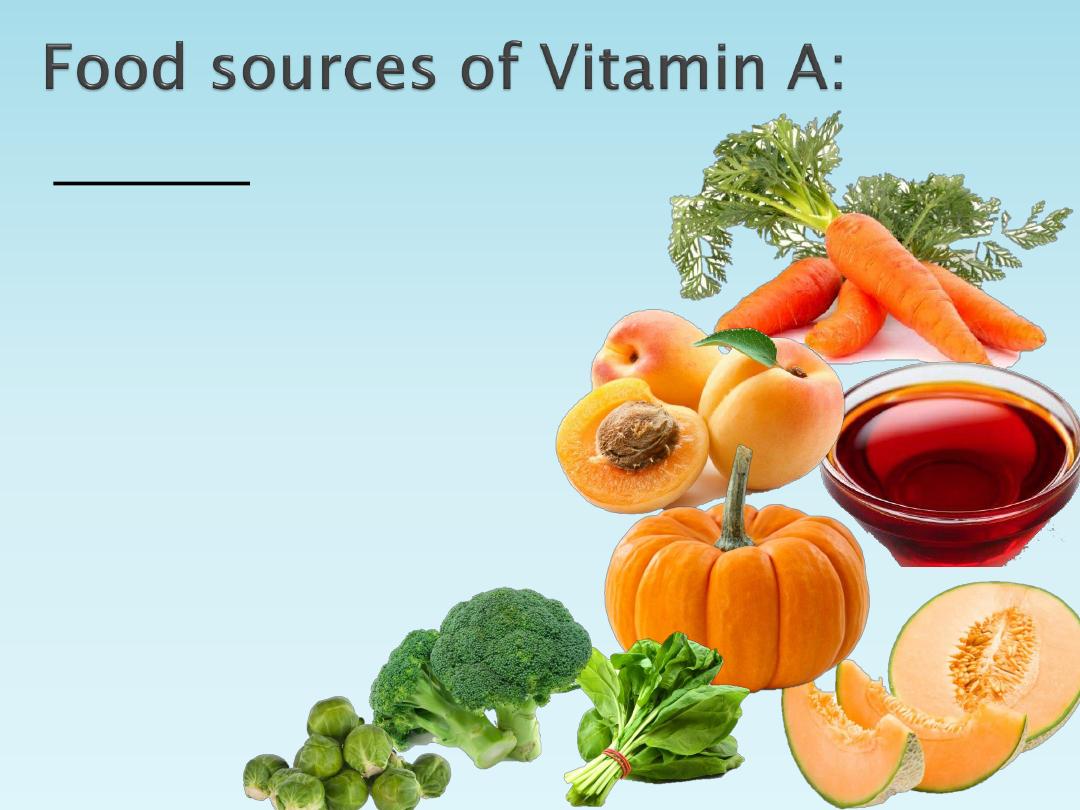
β-carotene:
Carrots.
Red palm oil.
Apricot.
Melon.
Pumpkin.
Dark green leafy vegetables
(Spinach, broccoli, sprouts).
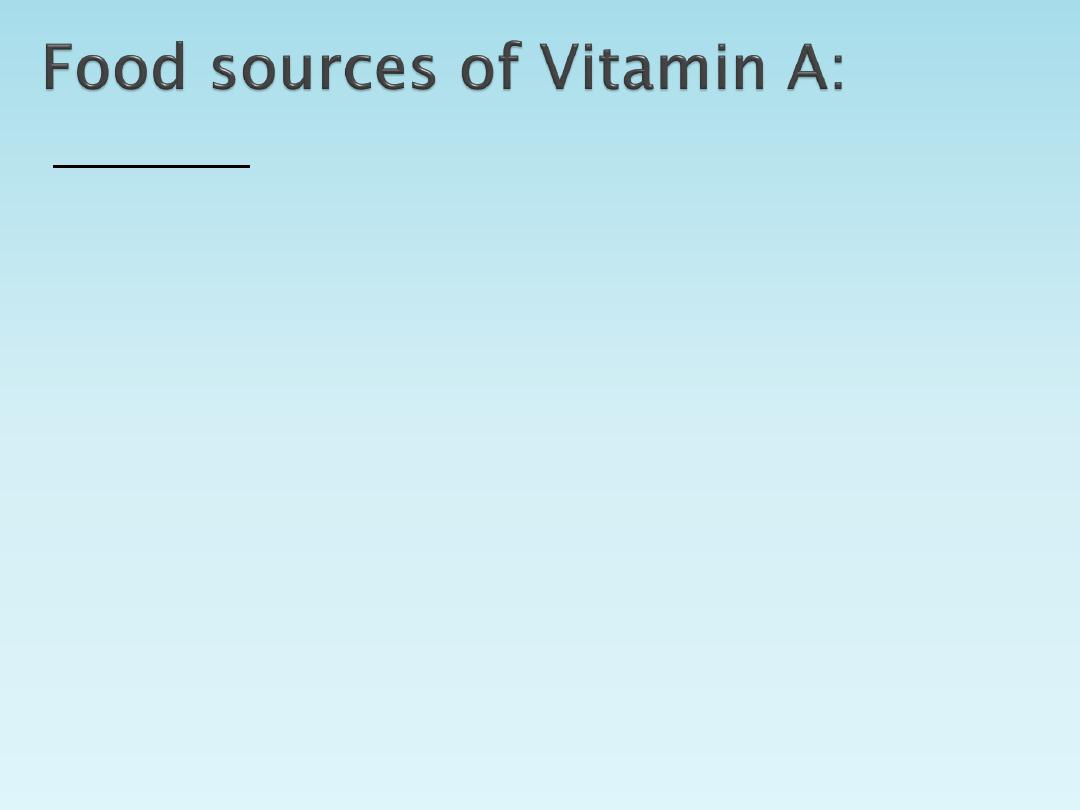
β-carotene:
One molecule of β-carotene can be cleaved by a specific
intestinal enzyme into two molecules of vitamin A, but this
conversion is not very efficient.
6μg of β-carotene is assumed to be equivalent to 1μg of
retinol.
Vitamin A is stored in the liver, this storage is enough for one
or two years in most well nourished adults.
Pharmacological dose of vitamin A reduces both
keratinisation of skin and sebum production.
13-cis-retinoic acid (tretinoin) and its isomer Isotretinoin, are
used either topically in cream or orally in capsules, but oral
retinoids are teratogenic.

*Daily requirement for healthy adults is 1mg
, and must not
be prescribed for women in whom there is any possibility of
pregnancy.
Because vitamin A is teratogenic there is no role for megadose
of this vitamin.
Regular intakes should not exceed 3.3mg in early pregnancy
(4.5 times the UK reference nutrients intake of 0.7mg).
Liver contains 13-40mg of vitamin A per 100g, so women
who or might become pregnant are advised not to eat liver or
products made from it.
Acute hypervitaminosis A causes increased intracranial
pressure and skin desquamation.

Chronic overdose is more common and can occur after long
term intake of 10 times the nutritional requirement or more.
Symptoms:
Headache.
Alopecia.
Dry, itching skin.
Hepatomegaly.
Bone and joint pain.
*High intake of β-carotene causes colouring of the plasma and
skin (Hypercarotenaemia) but is not dangerous.

Thank you
for your attention.
